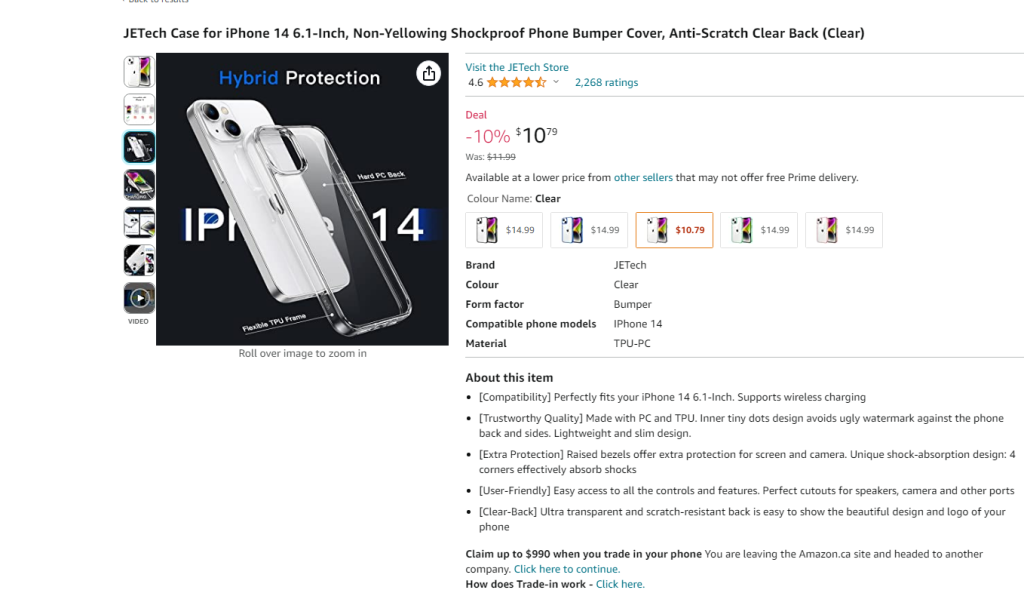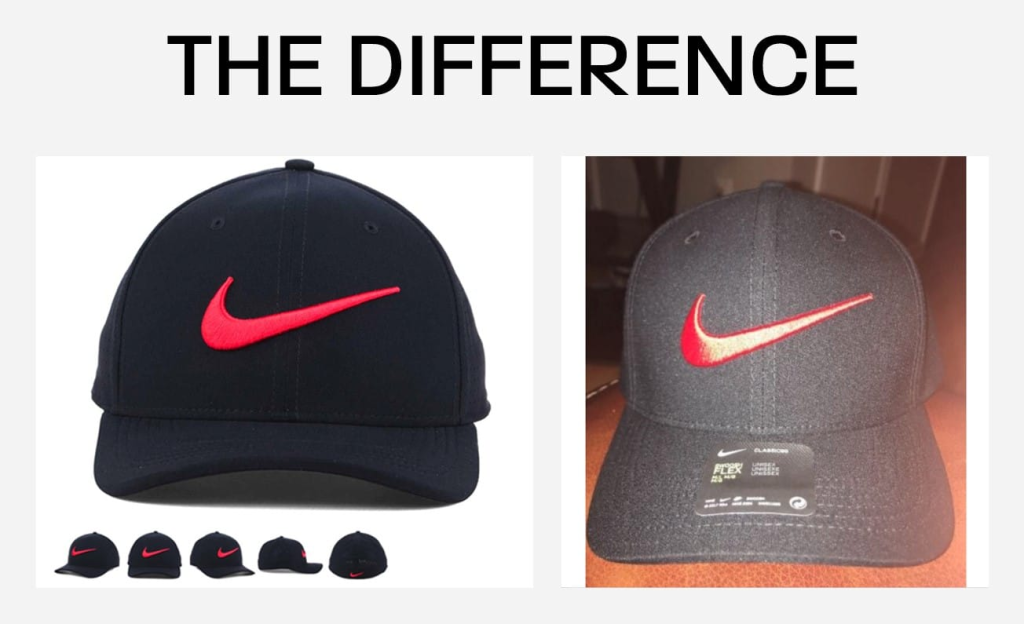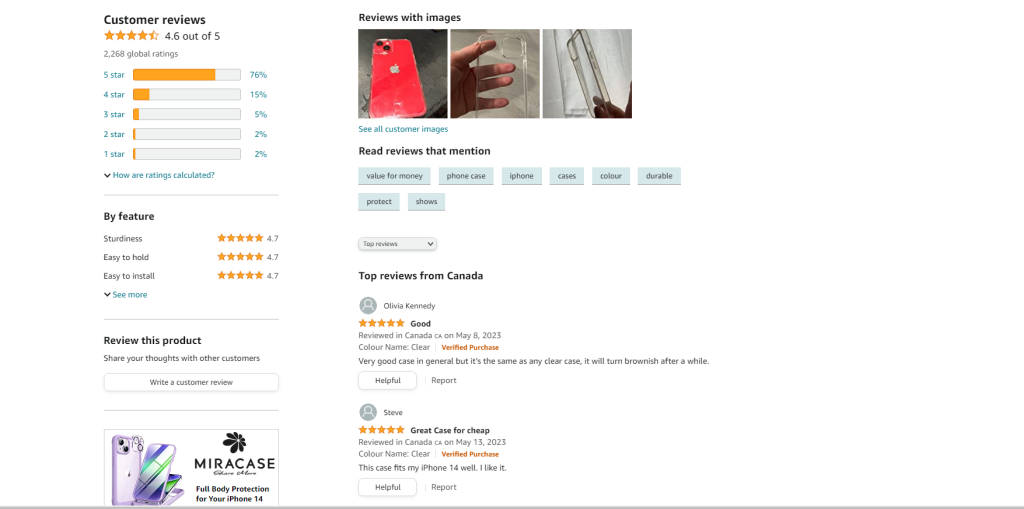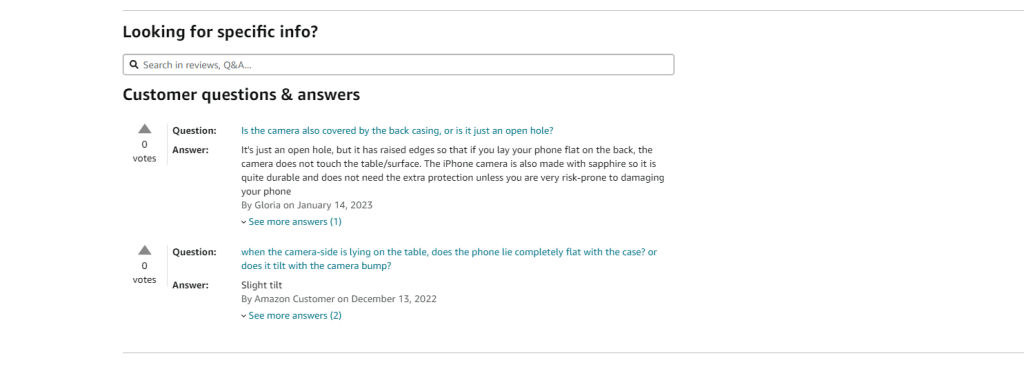10 Ways to Improve On-Page SEO for E-commerce Websites
The ultimate goal of any eCommerce website online is to convert! This goal of conversion can not simply happen by the building of an eCommerce website to sell your products online. Websites need to have a well planned SEO Toronto strategy that aims to increase the visibility of their products or services on search engines such as Google. With the increase in the competition online to sell products, it is time to apply a simple On-page SEO strategy to your ecommerce website to stand out among your competitors. Make your users match your fabulous product with the following On-Page SEO strategy!
Quick Links
What is an On-Page SEO Strategy?
On-Page SEO strategy is the process of optimizing parts of the website to help it rank better on search engines. Optimizing for On-Page SEO can help websites increase their visibility which in turn will help users find your products and services. It satisfies the ultimate goal of conversion and revenue generation if done properly. On-Page SEO strategy Encompasses many practices, but here you shall learn about some of the key factors that will help you frame your strategy better.
4 On-Page SEO Strategy to Boost Sales
- Keyword Research-
This is one of the most important aspects of the On-Page SEO strategy. You will struggle to succeed unless and until you know what your users are looking for on Search engines. To know what your users are looking for, put yourself in the shoes of your customer. Find out the specific keywords or phrases that your user target while searching for products related to yours. Google “LSI” or the “people also search” section can help to a large extent. So, it becomes very crucial for websites to frame their Content with keywords that satisfy the search intent of the users.
Note: Try to frame your Content with long tail keywords as it is in a natural speech and relatively easy to rank as compared to short tail keywords.
- Optimize Product Pages-
It is the area of an eCommerce website that matters most. You agree, right? A well-to-do product page should be self-sufficient in satisfying the search intent made by the user. Optimizing your product pages for elements such as Product descriptions, Images, Reviews, and FAQs will help you convert.
- Product Description: It aims to provide information about a product featured on the product page. Make sure to have a product description that is short, bullet-pointed and descriptive enough to make your user click! Just like the Product description in the screenshot below.

- Images: This is where eCommerce websites stand different from others. Images that compel users to take action. Tell me which one below makes you take action.

- Reviews: It is the basic tendency of humans to verify a product before they buy. This verification can be served hot with reviews from your lovely customers, just like below.

- FAQs: You, as an owner of an eCommerce website, do not want your potential customer to bounce due to insufficient information about the product or the process. A well written section of FAQs can help customers get information in a swift and easy manner. It saves the time of your customer support also, which otherwise could prove to be time consuming.

- UX-
It stands for User Experience. UX is a ranking factor for any website on Google’s SERP. It is obvious that any user would look for an experience that satisfies their search intent, be it an informational one or a commercial one. The point from clicking through the website to purchasing should be made smooth and easy for the users. The elements that dictate the user experience of a customer are:
- Responsive Design
- Smooth Working
- Easy Navigation
- Fast page Speed
- Useful Content
- Powerful CTA
- SEO optimized URL:
URLs are not only for the purpose of landing on a website or a specific web page. It is much more.
- It helps the user to know which web page they have landed on.
- It also helps the search engine crawler to understand the context of the web page better.
- It helps to better share the link of the product page with people for referral traffic.
- It enhances the user experience of the customer.
- It helps in the proper navigation of the users through the website back and forth.
For Example,
An SEO optimized URL: www.foryourinformatio.com/best-dog-toys/
Non-SEO optimized URL: www.foryouinformation.com/2022/145.html/
Note: The length of an SEO optimized URL should be short and descriptive. It should not exceed a character length of 75.
Final Words!!
If you’re thinking of optimizing your eCommerce website to boost your sales, you are on the right path. On-Page SEO can provide the push that will make your product or services visible to the people. With the above discussed key practice of On-page SEO, you can expect to improve the On-Page SEO of your website.
About The Author

Amir Waheed is the co-founder & CEO of SEO Toronto Experts. He intends to bring a massive transformation to e-Commerce SEO Services. His team of talented IT professionals knows the secret of getting huge conversions.
What Is WooCommerce Product Slider and Why Your Store Needs It
Why Do Product Images Matter So Much in Online Stores? When someone visits an online store the…
0 Comments9 Minutes
How to Streamline Your Customers’ Shopping Experience?
The goal for any online store is to make shopping as smooth as possible. When visitors move…
0 Comments8 Minutes
Strengthening Brand-Customer Relationships Through Gamified Loyalty Programs
Creating lasting connections with customers has become increasingly vital as the marketplace grows…
0 Comments6 Minutes
How to Use SEO and SEA Together in Search Engine Marketing
In digital marketing, search engine marketing (SEM) plays a critical role in improving online…
0 Comments10 Minutes
Content Marketing Growth Hacks: Real Shortcuts to Drive Traffic
Are you still lagging in content marketing? Sticking to these old strategies seems…
0 Comments10 Minutes
How to Build a Strong Local Following Using Social Media Marketing
In the days of likes, shares, and stories, local businesses have a golden opportunity to create…
0 Comments9 Minutes
Why WooCommerce is the Best Choice for Your Online Store?
WooCommerce stands out as a top option for anyone looking to build an online store. This platform…
0 Comments8 Minutes
How to Use AI-Powered SEO Tools for WordPress eCommerce
SEO is a critical factor in the success of any e-commerce WordPress store. As competition…
0 Comments11 Minutes








